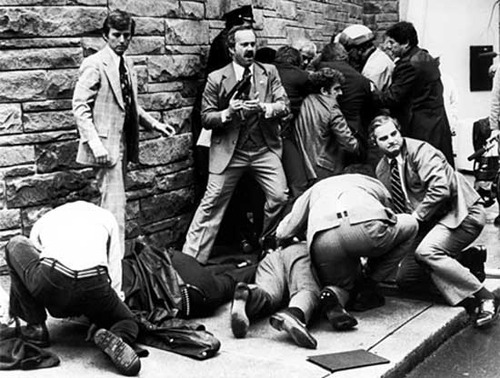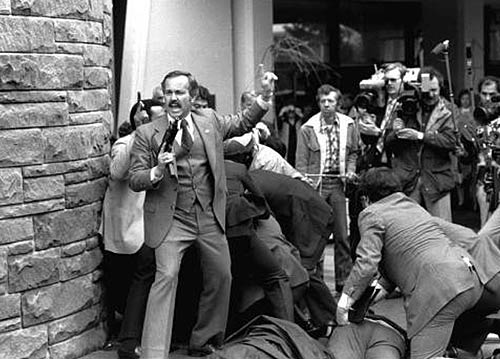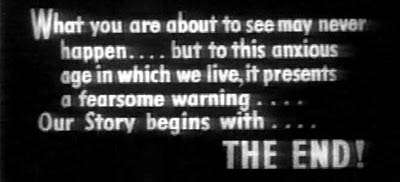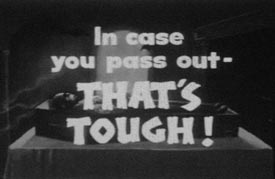incidents
‘Everything that irritates us about others can lead us to an understanding of ourselves.’ –Carl Jung
There is increasing awareness within the Defense Department that wars are interactively complex or “wicked” problems. (…) This article will examine the challenges interactively complex problems pose to U.S. military planning and doctrine. It will offer some modest suggestions for dealing with these problems. We use the terms “interactively complex,” “ill-structured” and “wicked” interchangeably throughout the article. (…)
Ill-structured problems are interactively complex. By definition, these problems are nonlinear. Small changes in input can create massive changes in outcome, and the same action performed at different times may create entirely different results. It is very difficult if not impossible to predict what will happen. Yet our war-planning process often promulgates detailed plans for well over the first 100 days of a conflict. Obviously, the true value of planning comes from the interactions of those doing the planning, not the plan itself. By shifting our planning focus from details of the plan to defining the problem, we can reap the benefits of intensive planning while exploring other problem definitions that should drive branch planning.
Ill-structured problems have no “stopping rule.” By definition, wicked problems have no end state. Rather, the planner must seek a “good enough” solution based on maintaining equilibrium around some acceptable condition. Unfortunately, our doctrine and practice continue to focus on developing an end state for every plan. When dealing with wicked problems, thinking in terms of an end state will almost certainly lead to failure. Instead, we should think about how to sustain “steady state” over the long term. While apparently a semantic quibble, accepting that wicked problems don’t “end” is vitally important for campaign planners and commanders alike.
‘Most human beings have an almost infinite capacity for taking things for granted.’ –Aldous Huxley

Can psychiatry be a science?
You arrive for work and someone informs you that you have until five o’clock to clean out your office. You have been laid off. At first, your family is brave and supportive, and although you’re in shock, you convince yourself that you were ready for something new. Then you start waking up at 3 A.M., apparently in order to stare at the ceiling. (…) After a week, you have a hard time getting out of bed in the morning. After two weeks, you have a hard time getting out of the house. You go see a doctor. The doctor hears your story and prescribes an antidepressant. Do you take it?
However you go about making this decision, do not read the psychiatric literature. Everything in it, from the science (do the meds really work?) to the metaphysics (is depression really a disease?), will confuse you. There is little agreement about what causes depression and no consensus about what cures it.
photo { Ujin Lee Dust }
I never look back, darling! It distracts from the now.
“Perhaps most troubling,” says the report, “the FBI could not determine in many cases whether the lost or stolen laptop computers contained sensitive or classified information. Such information may include case information, personal identifying information, or classified information on FBI operations.” Laptops can also contain goodies like the software that the FBI uses to make its identification badges, a copy of which was installed on a laptop stolen from the Boston Field Office in July 2002.
In the 44 months that it took to complete the new audit, the FBI lost 160 weapons and 160 laptop computers—a massive improvement over the 354 weapons and 317 laptops lost during the first 28-month-long audit. In any organization the size of the FBI, equipment is going to be lost, misplaced, or stolen, so perfection is not to be expected.
There are only three people in LA. Everything else is done with mirrors.
In the fall of 1996, a $30-million Hollywood production almost ground to a halt because of facial hair. As producer Art Linson recounted in his 2002 memoir, “What Just Happened?,” Alec Baldwin surprised everyone when he showed up to film “The Edge” (1997), a man-against-nature thriller, with an overgrown beard. A profanity-laced debate ensued between producer, star, agent and studio executives.
Finally it came down to this: The execs, who had already sunk millions into the production, wouldn’t shoot the picture with their expensive star acting behind a hairy hedge. The stand-off might have ended badly for the studio if the star had walked, but in the end he didn’t: Mr. Baldwin blinked, emerging from his trailer clean-shaven for the first day of filming.
Why risk so much money over a few whiskers? The answer to that question and other mysteries of modern-day film financing can be found in “The Hollywood Economist,” Edward Jay Epstein’s latest foray into the seamy underbelly of Hollywood spreadsheets.
After many a summer dies the swan

How loud does something have to be to kill someone? I heard once on BattleBots that it took 150 decibels to stop the human heart. Is this true? If so, I’m afraid, since I work in a VERY loud job environment (I assemble 747 engines). So is there a fatal decibel level? And if so, is it really 150 decibels? Please tell me. I’m scared.
A 150-decibel noise isn’t loud enough to kill you, and even if it were, the immediate cause of death in most cases wouldn’t be direct trauma to the heart. But the TV show was right in the big-picture sense: if a noise were loud enough, you’d die.
What we’re talking about here is high-energy-impulse noise, also known as blast overpressure or air blast, which is “the sharp instantaneous rise in ambient atmospheric pressure resulting from explosive detonation or firing of weapons” (N.M. Elsayed, “Toxicology of Blast Overpressure,” Toxicology, 1997). What, you say this isn’t noise in the usual sense? Nonsense. It’s no different from a thunderclap or a sonic boom. It’s true you might not hear a truly titanic air blast, but that’s because your eardrums would shatter, and worst case you’d be dead.
photo { Esther Mathis }
quote { Aldous Huxley! }
Anyway, her name is CeCe, she said she go to BMCC
What to do if cracks appear in a marriage—from seeking counseling to calling it quits. (…)
Many couples work out what to do on their own.
But what should clashing couples do? Marriage counseling became a popular answer to that question after marital referees first appeared in the U.S. in the 1930s. (…) Counseling for couples gradually grew to be an entrenched social phenomenon. (…)
It is all going reasonably well— until Chris decides that he wants to leave. She never quite figures out what went wrong, numbering each possibility as it occurs to her. (There are more then 300 by book’s end.) Even a decent marriage, Ms. Morrison learns, can turn heartbreaking.
‘Maybe this world is another planet’s hell.’ –Aldous Huxley

Building a nuclear weapon has never been easier. NATO’s Michael Rühle provides step-by-step instructions for going nuclear, from discretely collecting material to minimizing the fallout when caught. These simple steps have worked for the likes of Israel, Pakistan, and North Korea, among others. The nuclear club is open to your country, too.
With young wing weak and dubious, the soul stayed

{ A 32-year-old Kentucky woman who said she didn’t know that she was pregnant delivered her newborn son on the floor of her laundry room by herself and even cut the umbilical cord. | AP/The Advocate-Messenger | Continue reading }
And Roemer’s data provided the first quantitative estimate for the speed of light
A California Highway Patrol officer helped slow a runaway Toyota Prius from 94 mph to a safe stop on Monday after the car’s accelerator became stuck on a San Diego County freeway, the CHP said.
Prius driver James Sikes called 911 about 1:30 p.m. after accelerating to pass another vehicle on Interstate 8 near La Posta and finding that he could not control his car, the CHP said.
“I pushed the gas pedal to pass a car and it did something kind of funny… it jumped and it just stuck there,” the 61-year-old driver said at a news conference. “As it was going, I was trying the brakes…it wasn’t stopping, it wasn’t doing anything and it just kept speeding up,” Sikes said, adding he could smell the brakes burning he was pressing the pedal so hard.
A patrol car pulled alongside the Prius and officers told Sikes over a loudspeaker to push the brake pedal to the floor and apply the emergency brake.
“They also got it going on a steep upgrade,” said Officer Jesse Udovich. “Between those three things, they got it to slow down.”
After the car decelerated to about 50 mph, Sikes turned off the engine and coasted to a halt
{ AP/Google | Continue reading | courtesy of Andrew P. }
Is that Vitronic? No, Vitronic has a different outfit.
Mirage: The Omnidroid 9000 is a top-secret military fighting robot. Artificial intelligence allows it to solve any problem it’s presented with, and, unfortunately…
Mr. Incredible: Let me guess. It became smart enough to wonder why it had to take orders.
Mirage: We lost control, and now it’s loose in the jungle, threatening our facility.
Dave: Open the pod bay doors, HAL.
HAL: I’m sorry, Dave. I’m afraid I can’t do that.
Dave: What’s the problem?
HAL: I think you know what the problem is just as well as I do.
Dave: I don’t know what you’re talking about, HAL.
HAL: I know that you and Frank were planning to disconnect me, and I’m afraid that’s something I cannot allow to happen.
I’m a relatively respectable citizen. Multiple felon perhaps, but certainly not dangerous.
Over the past quarter century, DNA evidence has transformed criminal justice, freeing hundreds of innocent people and helping unravel countless crimes that might otherwise have gone unsolved. It has also captivated the public imagination: the plots of popular TV crime shows often hinge on the power of DNA to crack impossible cases, which has helped to give this forensic tool an air of infallibility—a phenomenon known in criminal justice circles as “the CSI effect.” This failsafe image is not entirely unfounded, especially when it comes to traditional applications of DNA evidence.
But increasingly DNA is being used for a new purpose: to target the culprits in cold cases, where other investigative options have been exhausted. All told, U.S. law enforcement agencies have conducted more than 100,000 so-called cold-hit investigations using the federal DNA database and its state-level counterparts, which hold upward of 7.6 million offender profiles. In these instances, where the DNA is often incomplete or degraded and there are few other clues to go on, the reliability of DNA evidence plummets—a fact that jurors weighing such cases are almost never told. As a result, DNA, a tool renowned for exonerating the innocent, may actually be putting a growing number of them behind bars.
Easy, easy girl. You’re overreacting, everything’s fine, they’re just… all getting coffee! At the same time.
Nearly the entire hit was recorded on closed-circuit TV cameras, from the time the team arrived at Dubai’s airport to the time the assassins entered Hamas military leader Mahmoud al-Mabhouh’s room. The cameras even caught team members before and after they donned their disguises. The only thing the Dubai authorities have been unable to discover is the true names of the team. But having identified the assassins, or at least the borrowed identities they traveled on, Dubai felt confident enough to point a finger at Israel. (Oddly enough several of the identities were stolen from people living in Israel.)
After Dubai released the tapes, the narrative quickly became that the assassination was an embarrassing blunder for Tel Aviv. Mossad failed spectacularly to assassinate a Hamas official in Amman in 1997— the poison that was used acted too slowly and the man survived—and it looks like the agency is not much better today. Why were so many people involved? (The latest report is that there were 26 members of the team.) Why were identities stolen from people living in Israel? Why didn’t they just kill Mr. Mabhouh in a dark alley, one assassin with a pistol with a silencer? Or why at least didn’t they all cover their faces with baseball caps so that the closed-circuit TV cameras did not have a clean view?
The truth is that Mr. Mabhouh’s assassination was conducted according to the book—a military operation in which the environment is completely controlled by the assassins. At least 25 people are needed to carry off something like this. You need “eyes on” the target 24 hours a day to ensure that when the time comes he is alone. You need coverage of the police—assassinations go very wrong when the police stumble into the middle of one. You need coverage of the hotel security staff, the maids, the outside of the hotel. You even need people in back-up accommodations in the event the team needs a place to hide.
I can only speculate about where exactly the hit went wrong. But I would guess the assassins failed to account for the marked advance in technology. Not only were there closed-circuit TV cameras in the hotel where Mr. Mabhouh was assassinated and at the airport, but Dubai has at its fingertips the best security consultants in the world. (…)
Not completely understanding advances in technology may be one explanation for the assassins nonchalantly exposing their faces to the closed-circuit TV cameras, one female assassin even smiling at one.
‘If you are going through Hell, keep going.’ –Winston Churchill
The Feb. 27 magnitude 8.8 earthquake in Chile may have shortened the length of each Earth day.
JPL research scientist Richard Gross computed how Earth’s rotation should have changed as a result of the Feb. 27 quake. Using a complex model, he and fellow scientists came up with a preliminary calculation that the quake should have shortened the length of an Earth day by about 1.26 microseconds (a microsecond is one millionth of a second).
Perhaps more impressive is how much the quake shifted Earth’s axis. Gross calculates the quake should have moved Earth’s figure axis (the axis about which Earth’s mass is balanced) by 2.7 milliarcseconds (about 8 centimeters, or 3 inches). Earth’s figure axis is not the same as its north-south axis; they are offset by about 10 meters (about 33 feet).
By comparison, Gross said the same model estimated the 2004 magnitude 9.1 Sumatran earthquake should have shortened the length of day by 6.8 microseconds and shifted Earth’s axis by 2.32 milliarcseconds (about 7 centimeters, or 2.76 inches).
‘Every moment is the last because it is unique.’ –Marguerite Yourcenar

Erotomania is a type of delusion in which the affected person believes that another person, usually a stranger, is in love with him or her.
The illness often occurs during psychosis, especially in patients with schizophrenia or bipolar mania.
Erotomania is also called de Clérambault’s syndrome, after the French psychiatrist Gaëtan Gatian de Clérambault (1872–1934).
The term erotomania is often confused with obsessive love, obsession with unrequited love, or hypersexuality (hypersexuality replaces the older concepts of nymphomania (furor uterinus) and satyriasis.).

The Reagan assassination attempt occurred in Washington, D.C. on Monday, March 30, 1981.


President Reagan and three others were shot and wounded by John Hinckley, Jr. with a .22-caliber pistol.



Reagan was the first serving United States president to survive being shot in an assassination attempt.

{ Reagan assassination attempt | Wikipedia | Continue reading | Google Images | Related: In a 1982 speech, President Ronald Reagan declared illicit drugs a threat to America’s national security, putting a too-literal gloss on the phrase “war on drugs.” }

The motivation behind Hinckley’s attack stemmed from an obsession with actress Jodie Foster due to erotomania. While living in Hollywood in the late 1970s, he saw the film Taxi Driver at least 15 times, apparently identifying strongly with Travis Bickle, the lead character.
Hinckley arrived in Washington, D.C. on Sunday, March 29, getting off a Greyhound Lines bus and checking into the Park Central Hotel. He had breakfast at McDonald’s the next morning, noticed U.S. President Ronald Reagan’s schedule on page A4 of the Washington Star, and decided it was time to make his move.
Knowing that he might not live to tell about shooting Reagan, Hinckley wrote (but did not mail) a letter to Foster about two hours prior to the assassination attempt, saying that he hoped to impress her with the magnitude of his action.
{ Wikipedia | Continue reading | The Trial of John Hinckley, 1982 | Hinckley bought two identical .22-caliber revolvers in Rocky’s Pawn Shop in Dallas on Oct. 3, 1980 | Photos: John Hinckley, Jr. | Jodie Foster in Taxi Driver. }
I will never be untrue

{ Miss Landmine | Thanks Glenn! }
‘The sadness will last forever.’ –Van Gogh
Tom alerted me to this fantastic brief case published in the British Medical Journal where a builder is admitted to hospital in great pain after a nail penetrated all the way through his boot. But it turned out that the pain was entirely psychological, as the nail had missed his foot by sliding between his toes. (…)
This isn’t really the nocebo effect, where ’side-effects’ appear after having taken nothing but a placebo, but more similar to what doctors might describe in its persistent form as somatisation disorder where physical symptoms appear that aren’t explained by tissue damage.
My favorite thing is me coming to visit you, and then you ask, How about a small smackeral of honey?
Dancing at the funeral party
Antarctica is warming, but not melting anything like as much as expected. In fact, during the continent’s summer this time last year, there was less melting than at any time in the 30 years that we have had reliable satellite measurements of the region. (…)
Melting in Antarctica happens almost entirely in the summers, which have warmed very little, say Andrew Monaghan of the National Center for Atmospheric Research in Boulder, Colorado, and Marco Tedesco of the City College of New York. (…)
But Tedesco warns that as the ozone hole heals in the coming decades, the winds will weaken, the continent will become much warmer in summer – and melting will increase.
{ New Scientist | Continue reading }
An iceberg that broke off of Antarctica in 2000 is headed toward Australia. Usually, they circulate around Antarctica due to currents there but this one managed to escape, and is drifting northeast toward Australia’s south-southwest coast. Since it broke off the main ice mass it shrank from 140 square kilometers down to 115 square km. Manhattan is 88 sq km. It would fit comfortably inside that iceberg.
related { Frozen Britain seen from satellite | Plus: A deluge of overnight snow has left much of Britain paralysed, with airports closed, schools shut, normally-busy roads impassable and train lines all but empty. 10 ways to cope with snow. }
















